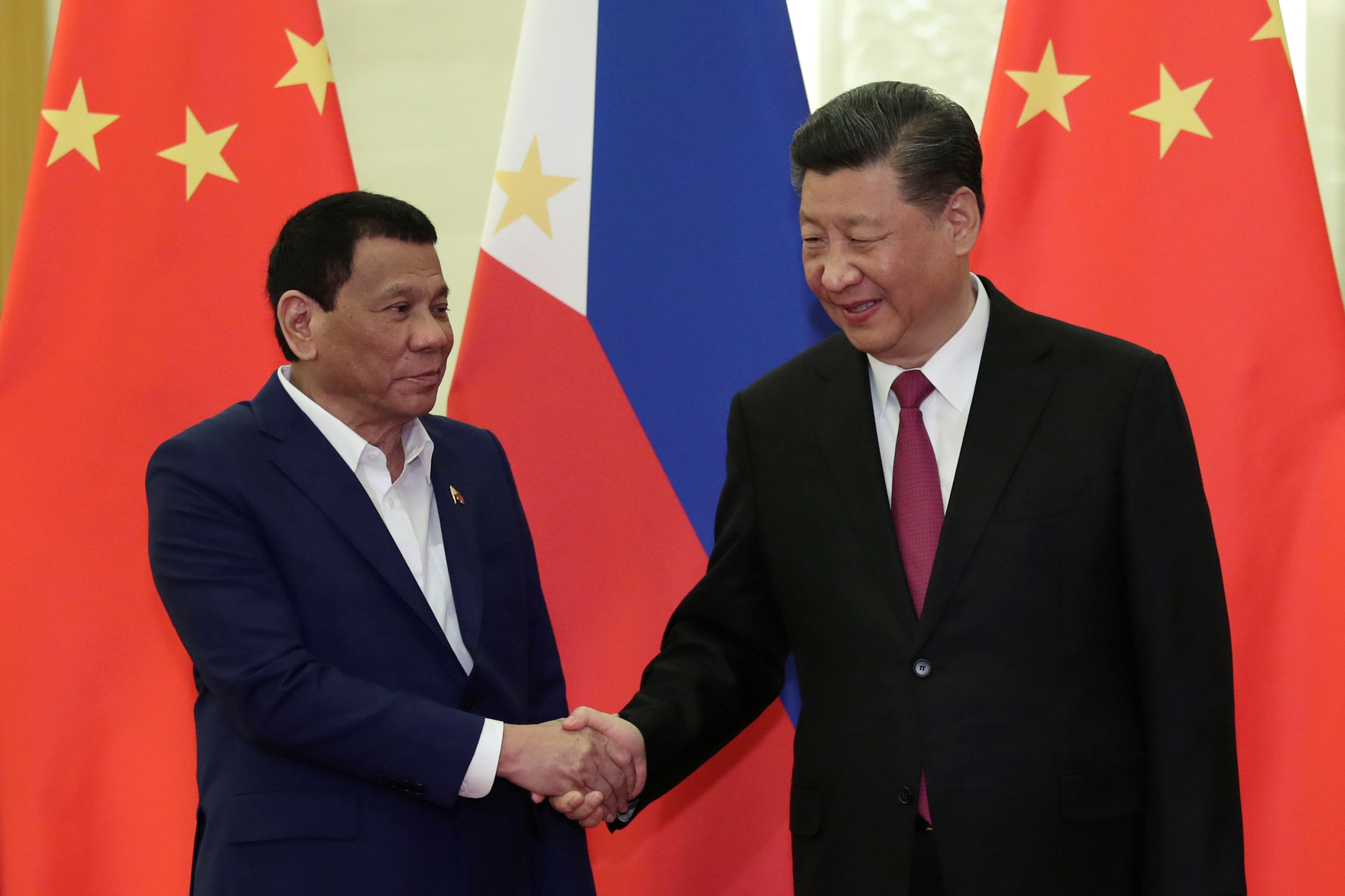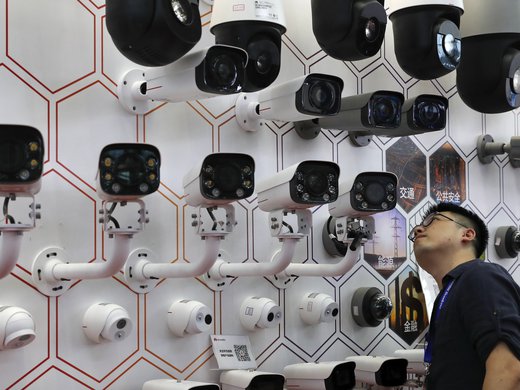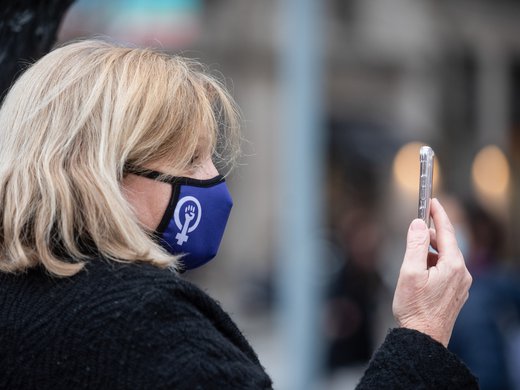While digital technologies have given governments around the globe a tool to communicate with their people, understand popular sentiment, evaluate the potential political costs and adapt government policies, these same tools have given autocratic and illiberal governments unprecedented capabilities to remain in power.
Indeed, while surveillance, propaganda and disinformation have always been part of an autocrat’s playbook, several technologies make this repression and control much more pervasive, efficient and subtle. Nowhere is this more evident than in China.
Digital authoritarianism takes many forms; from online harassment, to disinformation, to internet shutdowns, cyberattacks and targeted surveillance using social media, artificial intelligence (AI) and facial recognition software. The tactics of Saudi Arabia or of an economic and technological powerhouse such as China are certainly more high-tech than those of the leaders of the Philippines, Russia, Egypt or Iran. Nonetheless, lower tech does not mean diminished threat. Governments with fewer political, technology and economic resources are nevertheless quite capable of eroding democracy and human rights.
Moreover, it’s important to understand that elements of digital authoritarianism can and do exist in liberal democracies such as Canada and the United States.
The fact is that the global democratic decline of the past 15 years has coincided with the rise of new technologies for information-gathering, communication and surveillance. It is worth exploring this intricate relationship. Autocratic leaders and governments have learned to capitalize on digitization. They’ve learned that regime survival can depend on their capacity to deploy and weaponize such technologies against their own citizens. Authoritarianism has been reinvented: it has gone digital.
While the digital revolution began in the 1950s, the emergence of new digital and information technologies, nearly 20 years ago, marked a new era for the technological revolution and greatly accelerated the digitization of societies. People, politics and markets have become interconnected and interdependent in unprecedented ways. The capacity of these technologies to transform economies and geopolitics is staggering. Early on, there was a broad expectation that digital technological advancements, the internet, social media, artificial intelligence and machine learning would benefit freedom of speech, bring down dictators and spread democracy across the globe. Today, most of this technological idealism appears to be gone.
Indeed, now defined as “the use of digital information technology by authoritarian regimes to surveil, repress, and manipulate domestic and foreign populations,” digital authoritarianism is rapidly entering the vocabulary of foreign affairs practitioners and researchers as a new global force of disruption.
The country that has perfected the art of digital authoritarianism is certainly China. For years, Beijing has invested in a widespread technological apparatus meant to control the Chinese population in all aspects of their lives. Beginning with the “Great Firewall,” an internet reserved for people in China and heavily controlled by authorities, China’s vision for cyber sovereignty is antithetical to universal human rights. Beijing is also deploying closed-circuit television cameras, sensor data and AI tracking around the country, making surveillance omnipresent.
The result is a climate of fear and (self-)censorship. A well-known example of this abuse of digital tools can be observed of Xinjiang Region, where the Uighurs, a Muslim minority targeted by Chinese authorities and falsely labelled as terrorists, are constantly monitored. According to several experts and officials, Xinjiang has become what some have called an “open-air prison” and “digital Gulag.” One software engineer, who agreed to talk to the BBC on the condition of anonymity, stated that “the Chinese government use Uyghurs as test subjects for various experiments just like rats are used in laboratories.”
In Xinjiang Region, Uighurs are identified through facial recognition software and AI; their smartphones are tracked to determine their whereabouts; they must provide DNA samples, or have their voices recorded so that authorities can use speech recognition tools when spying on phone conversations. As reported by Human Rights Watch, an app designed for the region as part of its mass surveillance Integrated Joint Operation Platform aggregates various data about people’s lives and alerts police authorities when someone is deemed “suspicious.”
The Chinese Security Bureau benefits from not only a close relationship with Chinese tech companies, particularly Huawei, SenseTime, Hikvision, iFlytek and Megvii, but also from a context in which there are neither privacy laws, nor ways to complain to authorities, nor polls at which to express anger. As the relationship between the Chinese government and the private sector becomes more complex, Beijing could also coerce the private Chinese tech sector to create technologies specifically to exert new forms of societal control.
But leaders interested in authoritarian rule and regime survival do not necessarily need high-tech tools. For some, internet shutdowns and online harassment and disinformation are enough to silence critics and control the narrative. Filipino President Rodrigo Duterte, for example, aptly combines traditional means of repression with low-tech tactics such as social media harassment and online disinformation. And big tech has not been a mere bystander since the 2016 elections, when Facebook employees trained Duterte’s staff. The platform continued this partnership once Duterte won, by offering new services and tools to the new president.
The global and interconnected nature of the internet makes authoritarianism more transnational than ever before. Authoritarian regimes have the capacity to silence their citizens in the diaspora through digital threats, coercion by proxy and spyware.
By creating a small army of digital strategists, bloggers and influencers from all levels of society, Duterte has weaponized information and communications platforms to remain in power and discredit opponents. He has flooded social media with disinformation and attacks against journalists, politicians and human rights activists. Combined with more traditional tactics such as arbitrary arrests, extrajudicial killings and criminal charges, Duterte’s digital authoritarianism, characterized by patriotic trolling and astro-turfing, has proven vicious. Astro-surfing has become quite an effective, low-tech political and marketing tool, since it generates an artificially manufactured movement. A small group of supporters can create multiple online identities and coalitions to amplify messages and gain traction online.
Russia has received much attention for its use of disinformation and propaganda, most notably for its attempts to influence US elections and the Brexit campaign. Russian foreign influence operations are nothing new and the Kremlin has long sought to exploit existing social and political tensions in Western societies to widen divisions, encourage mistrust in democratic institutions and processes, and discredit democracy at home. It is the transnational nature of the internet that has given Russia a new level of power to achieve these goals. Of course, the Kremlin also deploys surveillance and hacking campaigns against Russian activists at home and abroad. As the head of the Chechen Republic stated, “This modern age and technology allow us to know everything and we can find any of you....”
Indeed, the global and interconnected nature of the internet makes authoritarianism more transnational than ever before. Authoritarian regimes have the capacity to silence their citizens in the diaspora through digital threats, coercion by proxy and spyware, as Freedom House revealed in its Out of Sight, Not Out of Reach report. Transnational digital authoritarianism is particularly subtle, pernicious and low-cost, since it circumvents issues of national sovereignty and does not require travel. As Freedom House’s report shows, the governments of China, Qatar, Russia, Rwanda and Saudi Arabia have been particularly adept at threatening and asserting control over citizens overseas.
Digital authoritarianism is also increasingly portable. Not only do countries such as China, Saudi Arabia and Russia serve as role models for the repressive use of technologies, but they also export some of their information and surveillance tools. The extent to which China strategically exports its digital authoritarianism is alarming to many. For Alina Polyakova and Chris Meserole, “Beijing’s experience using digital tools for domestic censorship and surveillance has made it the supplier of choice for illiberal regimes.” At least 24 governments primarily use Chinese surveillance technologies, particularly in Sub-Saharan Africa. Similarly, a report by the Australian Strategic Policy Institute argues that China serves as a model of digital authoritarianism for non-democratic governments, as Chinese technology companies expand globally. Most recently, Senegal has embarked on a path toward digital sovereignty, thanks to Chinese equipment and technical support from Huawei.
Yet, according to Steven Feldstein, while China may be a primary supplier of surveillance technologies, there is no evidence of a grand intentional strategy to “systematically proliferate digital authoritarian tools.” The reasons are more lucrative than ideological. While some Chinese surveillance technologies are being adopted by governments in Sub-Saharan Africa and East and Central Asia, many illiberal governments still appear to rely on the internet and social media to control and repress their citizens. Of course, this may change rapidly as China seeks to impose its own vision of “human rights” in international bodies and as Chinese tech companies continue to operate abroad.
But, as noted above, digital authoritarianism is not confined to illiberal governments. Indeed, democracies such as Canada, the United Kingdom, India and the United States are not immune to methods that are part of the digital authoritarian tool kit, especially since use of surveillance and tracking has become a feature in many of the technologies of our daily environment, as Shoshana Zuboff elucidates through her concept of surveillance capitalism. We must examine ourselves, and protect the privacy and data of citizens here at home, while at the same condemning techno-autocrats, including those who use transnational repression to target activists who live within our borders.
Furthermore, many technologies used for digital authoritarianism are developed and sold by Western tech companies. Western nations are therefore implicated in the surveillance and tech market that can benefit repressive regimes. The US company Sandvine – which has an office in Canada – supplied an internet-blocking technology to Belarus that was used to block access to websites and repress protests during the 2020 Belarussian elections. In June, senior executives at French surveillance companies Amesys and Nexa Technologies were indicted for alleged complicity in crimes of torture and enforced disappearance, and for allegedly providing surveillance technology to governments in Libya and Egypt.
Complicating matters is that technologies such as AI and social media are “dual-use technologies,” meaning they can be used for good and ill. These surveillance and spyware technologies, and of course social media platforms, cannot be banned, since they were not developed to commit human rights abuses. But governments and international bodies could have stricter export control and due diligence rules that would prevent uses that undermine democracy.
The nefarious relationship between authoritarianism and digital technologies described here paints a dark picture of the future. How much worse can it get? On the one hand, while China has the advantage of being able to create and manage its own platforms and infrastructure, and still attracts tech giants such as Apple, it remains an exception. At the moment, no other country is capable of the same degree of control, although several regimes in the Gulf and the Middle East have some state capacity and resources to establish societal control through technology. Digital authoritarianism is also costly, since tactics such as internet shutdowns slow down economic development.
On the other hand, as the Chinese government and private tech sector massively invest in Sub-Saharan Africa, Latin America and South Asia, liberal democracies are losing the normative, economic and tech battle. Through this investment and by gaining more influence at the United Nations, Beijing is beginning to serve as a role model for governance and repressive use of technology, while Western democracies fail to provide clear alternative models. As tech companies continue to put profit over human rights, authoritarian governments are taking the lead. A clear example of this occurred two weeks ago at the 47th session of the UN Human Rights Council. As 44 countries joined Canada in calling for an investigation of human rights violations against the Uighur minority in Xinjiang, 65 countries expressed support for China and condemned “politically motivated and groundless accusations against China based on disinformation.”
This does not bode well. Democracies can and must turn their attention to this problem. And there is no time to waste.



